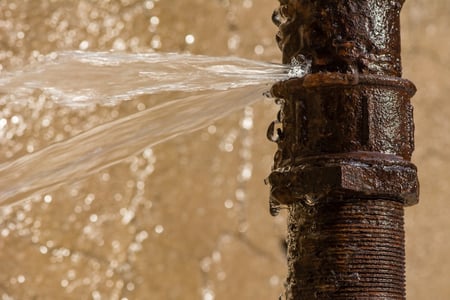Avoiding 3 Common Plumbing Issues in High-Rise Buildings

Plumbing installations perform a fundamental role in buildings, delivering clean water to plumbing fixtures of all types, and then sending used water to the sewage system. Given the importance of a water supply, issues that affect plumbing systems must be fixed as soon as possible. Water must be supplied continuously and protected from contamination, and drain pipes should be of adequate diameter and without obstructions.
This article will describe some common plumbing issues and how to prevent them. Ideally, plumbing installations should be optimized from the project design phase - reconfiguring a deficient system in an existing building is far more difficult, since many pipes are embedded in floors and walls. However, if a major renovation is already planned in your building, it provides an excellent opportunity to improve plumbing.
1) Deficient Venting in Plumbing Lines
Have you noticed that pouring water from a bottle is more difficult if you hold it vertically? On the other hand, water flows easily if the bottle is held at an angle. When water flows out of a bottle, the vacuum created is filled with air, but flow is slowed down if air movement is restricted.
The same principle applies for plumbing systems: When pipes lack adequate venting, flow is hindered and they may be unable to remove used water from fixtures fast enough. In the case of plumbing systems, vents must allow air movement into the pipes, but without letting odors out. The venting design also incorporates stacks that reach all the way to the rooftop, ensuring that odors are released where nobody is affected.
2) Backflow
As implied by its name, backflow consists of water movement opposite to the intended direction in a pipe. There are two main causes of backflow:
- Back siphonage, which is a reduction in upstream pressure. For example, water supply pressure decreases with a sudden increase in consumption.
- Back pressure, which is an increase in downstream pressure. In high-rise buildings, for example, gravity pushes back the water contained in the piping system and the supply pressure must be high enough to overcome this effect.
In both cases, the result is a pressure difference opposite to the intended flow direction, and backflow occurs unless the piping system includes measures to prevent it. The concept of a cross-connection is used to describe any existing or potential connection between a potable water supply and a non-potable fluid. Note that the non-potable fluid may be the water itself after it has been used.
Any device or building system that uses pressurized water creates a cross-connection, and automatic sprinkler systems are perhaps the most common example in NYC buildings. Since cross connections cannot be eliminated, they must be equipped with backflow preventers. There are many types, and they integrate elements such as check valves, vacuum breakers and detector assemblies.
3) Corrosion
In simple terms, corrosion is the gradual destruction of a material due to chemical action. One of the best-known examples of corrosion is the rusting of iron elements exposed to the weather. Since corrosion wears down metallic elements, it slowly decreases their load-bearing capacity. In the case of plumbing, corroded pipes are more susceptible to breaking with impact or bursting under high pressure.

Galvanic corrosion is a specific type that occurs when different metals are in physical contact. Plumbing designers avoid contact between dissimilar metals whenever possible, and protective measures are specified when avoiding it is not possible. The following are some examples of corrosion prevention measures:
- Electrical insulation.
- Preventing contact with water with an impermeable coating or paint
- Electroplating metals with a corrosion-resistant metal such as chromium.
- Adding a sacrificial anode - a third metal that is more vulnerable to corrosion, sparing the metallic components you want to protect.
Get a professional and code-compliant plumbing system design.
Conclusion
Plumbing systems may appear static compared with mechanical systems, but they also involve significant engineering challenges. A poor design and installation process can lead to issues like inadequate venting, backflow and corrosion. However, many plumbing issues can be prevented simply by working with a qualified engineering company.
Modifying plumbing systems in existing buildings can be very difficult, since plumbing fixtures and piping are embedded in walls and floors. A smarter approach is to schedule plumbing upgrades along with major renovations, when there will be no occupants in the property and disruptive upgrades can be carried out freely.

Anuj Srivastava
Anuj Srivastava is a principal partner at NY Engineers. He is known for his MEP franchise market knowledge. Anuj is currently leading a team of 100+ MEP/FP engineers and has successfully led over 1500 franchise projects in the US.
Join 15,000+ Fellow Architects and Contractors
Get expert engineering tips straight to your inbox. Subscribe to the NY Engineers Blog below.
